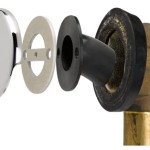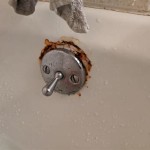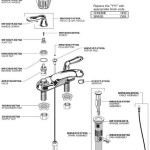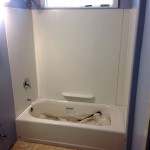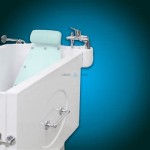How To Empty A Portable Bathtub: A Comprehensive Guide
Portable bathtubs offer a convenient solution for bathing in various settings, from apartments with limited space to situations where a traditional bathtub is unavailable. However, understanding the proper method for emptying a portable bathtub is crucial for maintaining hygiene, preventing spills, and preserving the lifespan of the tub itself. This article provides a detailed guide on how to safely and efficiently empty a portable bathtub.
Before initiating the emptying process, it's essential to consider the type of portable bathtub being used and the surrounding environment. Different models may have varying drainage mechanisms, and awareness of the environment will help prevent water damage. Furthermore, safety precautions should be taken to avoid slips and falls associated with water accumulation during the draining process. The method chosen should prioritize both efficiency and minimizing potential hazards.
Key Point 1: Understanding Your Portable Bathtub's Drainage System
The first step in emptying a portable bathtub is to thoroughly understand the specific drainage system it employs. Most portable bathtubs utilize one of several common designs. These include a drain plug located at the bottom of the tub, a drainage hose that can be attached to a sink or floor drain, or a built-in pump designed to expedite the water removal process. Refer to the manufacturer's instructions specific to the bathtub model for detailed information on its drainage mechanism.
The drainage plug is the most basic type of emptying mechanism. Typically, the plug is a rubber or silicone stopper that is inserted into the drain opening at the bottom of the tub. Removing the plug allows water to flow out. It's important to ensure the plug is securely seated before filling the tub to prevent leaks. Some tubs may incorporate a chain or tether attached to the plug to prevent it from being lost during the draining process. The location of the plug can vary slightly, but it is universally situated at the lowest point of the tub to maximize water drainage.
A drainage hose system provides more controlled water removal. These systems typically involve a flexible hose that attaches to a drain opening on the side or bottom of the tub. The other end of the hose is then directed toward a suitable drain, such as a sink, toilet, or floor drain. The distance and height differential between the bathtub and the drain point should be considered to ensure proper water flow. Some models may include a clamp or securing mechanism to prevent the hose from detaching during drainage. Drainage hoses often offer a cleaner and more directed approach to emptying the tub, reducing the likelihood of spills.
Built-in pumps are the most advanced drainage system found in some portable bathtubs. These pumps are powered by electricity or batteries and are designed to actively pump water out of the tub and into a designated drain. The pump significantly reduces the time required to empty the tub and is particularly useful for larger-capacity portable bathtubs. However, it is important to follow the manufacturer's instructions for operating the pump and to ensure the electrical components are safely distanced from the water. Regular maintenance and cleaning of the pump are also necessary to ensure its long-term functionality.
Regardless of the type of drainage system, ensure there is a clear and unobstructed path for the water to flow. Consider the potential volume of water that will be discharged and the capacity of the drain point to prevent backups or flooding. Pre-planning is critical to ensure a smooth and controlled emptying process. Furthermore, always check for any signs of damage or wear on the drainage components, such as cracks in the hose or deterioration of the drain plug. Such issues should be addressed before filling the tub to prevent potential leaks or drainage failures.
Key Point 2: Preparing the Area for Water Drainage
Prior to initiating the drainage process, it's imperative to meticulously prepare the surrounding area to minimize the risk of water damage and ensure a safe environment. This involves selecting an appropriate drain point, protecting the floor and surrounding surfaces, and taking necessary safety precautions.
The selection of a suitable drain point is crucial. Options include a sink, toilet, floor drain, or outdoor drainage area. The choice should be based on the proximity to the bathtub, the volume of water to be discharged, and the capacity of the drain. Sinks are suitable for smaller portable bathtubs, while floor drains are generally better suited for larger volumes of water. If draining into a toilet, be mindful of potential overflow and avoid flushing solid objects simultaneously. For outdoor drainage, ensure the water will not harm plants or cause erosion.
Protecting the floor and surrounding surfaces is essential to prevent water damage. Lay down towels, plastic sheeting, or waterproof mats around the bathtub and the path to the drain point. This will absorb any spills or splashes that may occur during the drainage process. Pay particular attention to areas that are susceptible to water damage, such as wooden floors or carpets. Consider using non-slip mats to prevent slips and falls, especially if the floor becomes wet. The protection provided should extend beyond the immediate vicinity of the bathtub, accounting for potential splashes or accidental hose disconnections.
Safety precautions must be implemented to mitigate the risks associated with water accumulation. Ensure the area is well-lit to improve visibility and prevent tripping hazards. Supervise children and pets closely to prevent them from entering the area during drainage. If using an electrical pump, ensure the electrical cord is properly grounded and kept away from water. Wear appropriate footwear, such as non-slip slippers or sandals, to reduce the risk of slipping. Clean up any spills promptly to maintain a safe environment. The focus should be on preventing accidents and minimizing potential injuries related to the drainage process.
Thorough preparation significantly reduces the likelihood of water damage and ensures a safer and more controlled drainage process. Taking the time to protect the surrounding area and implement safety precautions is an investment that can prevent costly repairs and potential injuries.
Key Point 3: The Emptying Process and Post-Drainage Procedures
Once the appropriate drainage system has been identified and the surrounding area has been prepared, the emptying process can commence. This involves carefully opening the drain, monitoring the water flow, and addressing any potential issues that may arise. Following the drainage, proper post-drainage procedures are necessary to ensure the cleanliness and longevity of the portable bathtub.
Begin the emptying process by carefully opening the drain mechanism. For bathtubs with a drain plug, gently remove the plug while being mindful of potential splashes. For tubs with a drainage hose, securely attach the hose to the drain opening and direct the other end toward the designated drain point. Ensure the hose is properly secured to prevent it from detaching during drainage. If using a built-in pump, follow the manufacturer's instructions for activating the pump. Monitor the water flow closely to ensure it is draining smoothly and efficiently. Check for any leaks or obstructions that may impede the drainage process.
During the drainage process, regularly monitor the water level in the bathtub and the capacity of the drain point. Avoid allowing the water to overflow or exceed the drain's capacity. If the drainage is slow or obstructed, investigate the cause and take appropriate action. This may involve removing any debris from the drain, adjusting the positioning of the hose, or temporarily pausing the drainage to allow the drain to catch up. Be prepared to address any unexpected issues that may arise, such as a clogged drain or a disconnected hose. The key is to maintain a controlled and supervised drainage process.
Post-drainage procedures are crucial for maintaining the hygiene and lifespan of the portable bathtub. Once the tub is completely empty, thoroughly rinse it with clean water to remove any residual soap, dirt, or debris. Use a mild detergent if necessary to remove stubborn stains. Wipe down all surfaces of the tub with a clean, dry cloth. Pay particular attention to areas where mold or mildew may accumulate, such as the corners and crevices. Allow the tub to air dry completely before storing it or using it again. This will help prevent the growth of mold and mildew and prolong the life of the bathtub.
Furthermore, inspect the drainage components for any signs of damage or wear. Check the drain plug for cracks or deterioration, and examine the drainage hose for leaks or kinks. Replace any damaged components promptly to prevent future drainage issues. Clean the drainage hose thoroughly to remove any buildup of debris. Store the portable bathtub in a dry and well-ventilated area to prevent moisture accumulation. These post-drainage procedures are essential for maintaining the cleanliness, functionality, and longevity of the portable bathtub.

Portable Folding Bath Indoor Plastic Bathtub Freestanding

Ez Bathe Inflatable Bath Tubs Portable Bathtub For S

Portable Folding Bath Indoor Plastic Bathtub Freestanding

Anja 47in Portable Foldable Bathtub For Freestanding Hot Ice Bath Tub Cowboy Blue

5 Easy Ways To Unclog Bathtub Drain

Portable Bathtub Small By Homefilos Japanese Soaking Bath Tub For S

The Best Portable Bathtubs For Easy Bathing Anywhere Batheportablebathtub

Portable Bathtub Singapore Singaporebathtubs Com

Portable Bathtub Singapore Singaporebathtubs Com

Todeco Foldable Bathtub 120cm Thermal Insulation Durable

